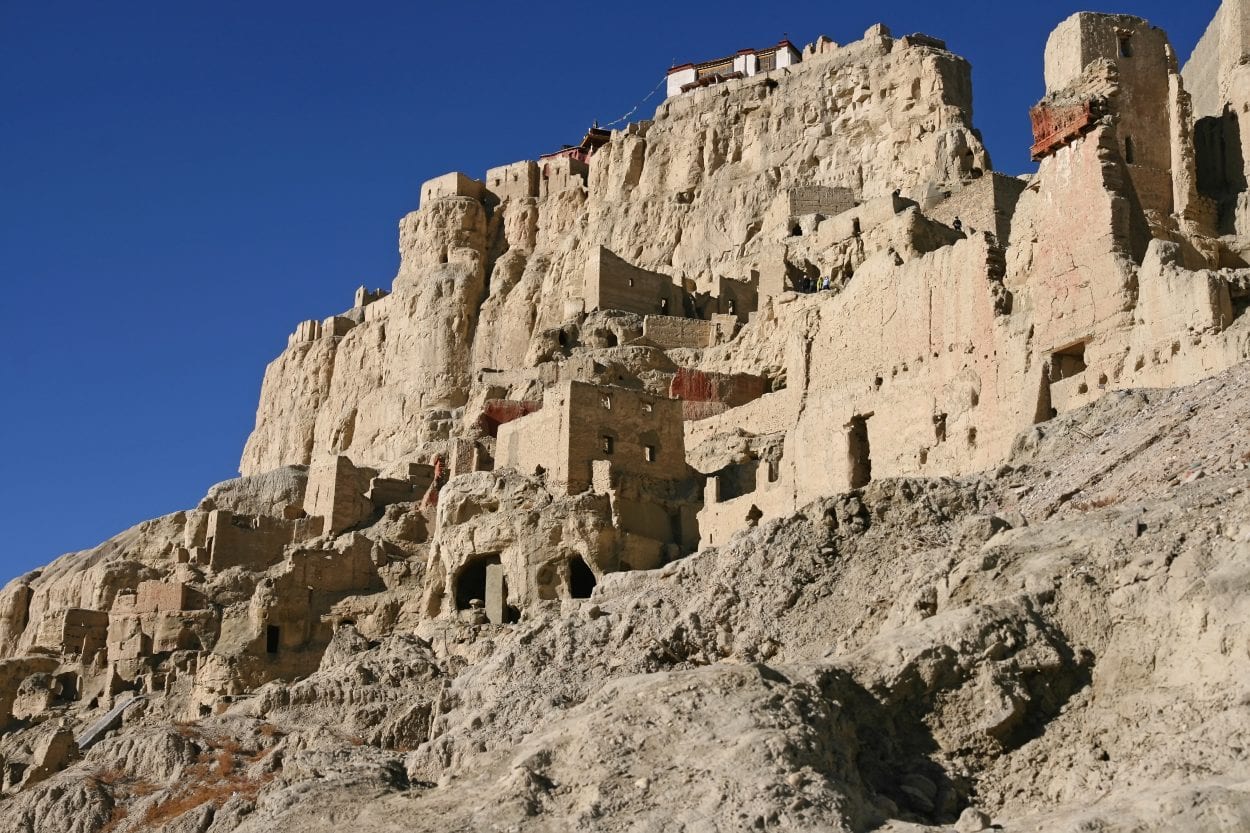Tsaparang, described possibly as the historical origin of the legendary Shangri-La by some historians is a ruined fortress city, perched on a pyramidal formation of rock that served as the capital of the Guge Kingdom in the Ngari Prefecture of Western Tibet.
The Guge Kingdom emerged around the 10th century AD on a major trading route, holding sway over large territories in south-eastern Zanskar, Upper Kinnaur district, and Spiti Valley, either by conquest or as tributaries.
According to traditional accounts, the city was founded in the Garuda Valley around the mid-9th or 10th century AD by the descendants of Langdarma, a Tibetan Emperor who was assassinated, resulting in the dissolution of the Tibetan empire in a period known as the Era of Fragmentation.
The city was perched on a pyramid-shaped rock citadel that contained the royal quarters, a summer palace, and two public temples – the Lhakhang Marpo (Red Chapel) and the Lhakhang Karpo (White Chapel) which depict Buddhas, complex deities and famous religious teachers. Throughout the city is a honeycomb of rock-cut tunnels and caves used by Tibetan Buddhist hermits, whilst the general populace of Tsaparang lived in a village at the base of citadel.

The first Westerners to reach Guge was a Jesuit missionary in AD 1624 led by Father António De Andrade and Brother Manoel Marques, where they obtained permission from the Guge King Tri Tashi Drakpa to build a Jesuit church at Tsaparang and instruct the people about Christianity.
A letter by De Andrade relates that some military commanders revolted and called the neighbouring Ladakhis to overthrow Tashi Drakpa, resulting in an invasion in AD 1630 and the royal family taken captive.
Around AD 1679–80, the Guge Kingdom and Tsaparang was conquered in a campaign to drive out the Ladakhis by the Lhasa-based Central Tibetan government under the leadership of Ngawang Lobsang Gyatso, the 5th Dalai Lama.
After the annexation of Tibet by the People’s Republic of China in the 1950’s, many of the historic statues and murals at Tsaparang was destroyed by the Chinese Red Guard during the Cultural Revolution between 1966 and 1976, as part of the movements purge of capitalist and traditional elements from Chinese society.
Header Image Credit : Pseudois – CC BY-SA 3.0





